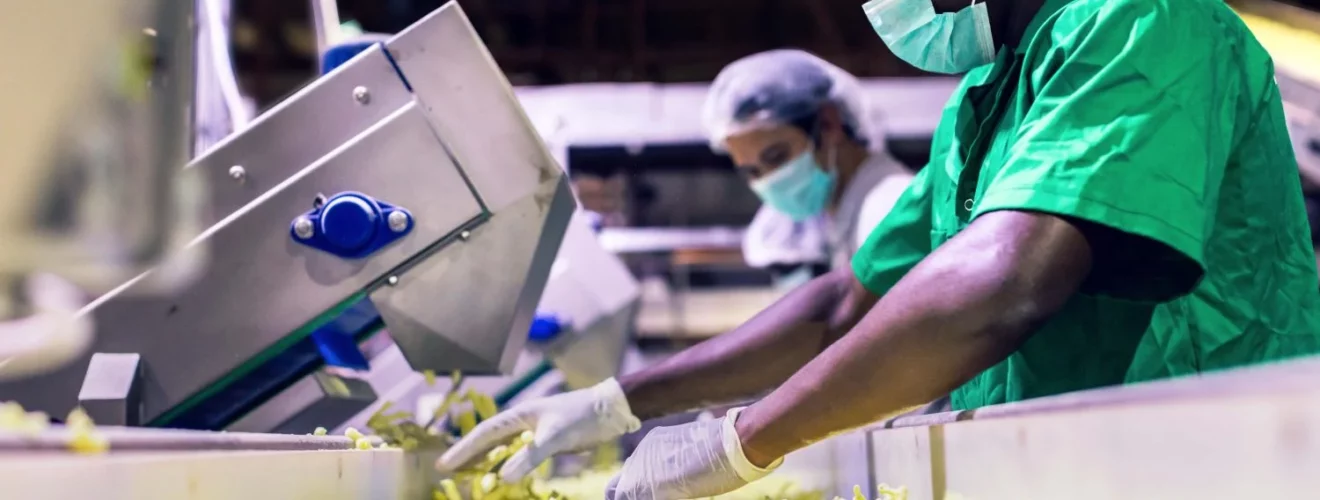Choosing the best food safety software for your food business

Choosing the Best Food Safety Software for Your Food Business
In an industry where compliance and quality control are paramount, selecting the right food safety software can significantly impact your food business. The right software not only simplifies processes but also ensures that your operations adhere to stringent food safety regulations. This article delves into the essential factors to consider when choosing food safety software, helping you make an informed decision that aligns with your business needs.
Understanding Your Business Needs
Before diving into the myriad of software options available, it is crucial to understand the specific needs of your food business. Each establishment, whether a restaurant, catering service, or food manufacturing unit, has unique requirements that must be addressed.
Choosing the best food safety software for your food business is a significant decision that can enhance operational efficiency and ensure compliance with food safety regulations. By understanding your business needs, evaluating key features, and considering vendor support, you can make an informed choice that aligns with your goals.
Assessing Your Current Processes
Begin by evaluating your existing food safety processes. Identify areas that require improvement or are currently time-consuming. For instance, if manual record-keeping is leading to errors or inefficiencies, a software solution that automates these tasks could be beneficial.
Furthermore, consider the size of your operation. A small café may not require the same level of complexity in software as a large-scale food manufacturing plant. Tailoring your choice to your specific operational scale is essential for maximising efficiency. Additionally, it would be prudent to involve your staff in this assessment process. Their insights can provide valuable perspectives on the daily challenges they face, which may not be immediately apparent from a managerial viewpoint. Engaging with your team can foster a sense of ownership and encourage a smoother transition to any new systems you decide to implement.

Identifying Compliance Requirements
Food safety regulations can vary significantly depending on your location and the type of food you handle. Familiarise yourself with the relevant laws and standards that govern your business. This understanding will guide you in selecting software that not only meets compliance requirements but also helps maintain high food safety standards.
Look for software that is regularly updated to reflect changes in legislation. This feature ensures that your business remains compliant without the constant need for manual adjustments. Moreover, consider the software’s ability to generate reports that can be easily shared with regulatory bodies. This capability not only simplifies the compliance process but also enhances transparency and accountability within your operations. Additionally, training your staff on these compliance features can further ensure that everyone is aligned with best practices, ultimately contributing to a culture of safety and diligence in your establishment.
Learn more on: Food safety management software that streamlines HACCP processes
Key Features to Look For
Once you have a clear understanding of your business needs, the next step is to identify the key features that your food safety software should possess. These features will vary based on your specific requirements, but certain functionalities are universally beneficial.
Real-Time Monitoring and Reporting
One of the most critical features of food safety software is the ability to monitor processes in real-time. This functionality allows for immediate detection of any deviations from established safety protocols, enabling swift corrective actions. Look for software that offers dashboards and alerts to keep you informed of potential issues as they arise.
Additionally, robust reporting capabilities are essential. The ability to generate comprehensive reports not only aids in internal audits but also provides necessary documentation for regulatory inspections. Choose software that allows for easy customisation of reports to suit your specific needs. Find more about inspections at https://ehs.missouri.edu/work/safety-insp
User-Friendly Interface
A user-friendly interface is vital for ensuring that all staff members can effectively utilise the software. Complicated systems can lead to frustration and errors, undermining the very purpose of implementing such technology. Opt for software that offers intuitive navigation and clear instructions, reducing the learning curve for your team.
Consider requesting a demo or trial period to assess the usability of the software before making a final decision. This hands-on experience can provide valuable insights into how well the software integrates into your existing processes.
Integration Capabilities
In today’s digital age, businesses often rely on multiple software solutions to manage various aspects of their operations. Therefore, the ability to integrate your food safety software with other systems, such as inventory management or point-of-sale systems, can enhance overall efficiency.
Integration reduces the need for duplicate data entry and ensures that all systems communicate seamlessly. This capability can lead to improved accuracy and a more streamlined workflow across your business.
Evaluating Vendor Support and Training
The relationship with your software vendor is crucial for long-term success. When selecting food safety software, consider the level of support and training offered by the vendor. A reliable vendor will provide comprehensive training resources and ongoing support to assist you in maximising the software’s potential.
Customer Support Services
Assess the availability and responsiveness of customer support services. Look for vendors that offer multiple channels of communication, including phone, email, and live chat. Quick access to support can be invaluable, especially during critical times when immediate assistance is necessary. To learn more about communication click here.
Additionally, check for user reviews and testimonials regarding the vendor’s support services. Positive feedback can provide reassurance that you will receive the help you need when challenges arise.
Training Resources
Effective training is essential for ensuring that your team can utilise the software to its fullest potential. Investigate the training resources provided by the vendor, including online tutorials, webinars, and user manuals. A vendor that invests in comprehensive training demonstrates a commitment to your success.
Moreover, consider whether the vendor offers ongoing training sessions or updates as the software evolves. This commitment to continuous learning can help your team stay current with best practices in food safety.
Cost Considerations
While the features and support offered by food safety software are essential, cost is an equally important factor. It is vital to evaluate the total cost of ownership, which includes not only the initial purchase price but also ongoing expenses such as subscription fees, maintenance, and training costs.

Budgeting for Software Costs
Establish a clear budget for your food safety software investment. Consider what you can afford without compromising on essential features. It may be tempting to opt for the cheapest option available, but this could lead to inadequate functionality or poor support in the long run.
Look for vendors that offer flexible pricing models, such as tiered pricing based on the size of your operation or the number of users. This flexibility can help you find a solution that fits your budget while still meeting your needs.
Return on Investment (ROI)
When evaluating the cost of food safety software, consider the potential return on investment. Effective software can lead to reduced labour costs, fewer compliance fines, and improved operational efficiency. By investing in the right solution, your business can save money in the long run while enhancing food safety practices.
Making the Final Decision
After conducting thorough research and evaluating your options, it’s time to make a decision. This process can be daunting, but keeping a few key points in mind can help simplify the final choice.
Involve Your Team
Engaging your team in the decision-making process can provide valuable insights and foster a sense of ownership. Solicit feedback from staff members who will be using the software daily. Their input can highlight practical considerations that may not have been initially apparent.
Furthermore, involving your team can ease the transition to the new software, as they will feel more invested in its success. A collaborative approach can lead to a smoother implementation process and greater overall satisfaction.
Plan for Implementation
Once a decision has been made, develop a clear implementation plan. This plan should outline timelines, responsibilities, and training schedules to ensure a smooth transition. Consider conducting a phased rollout, starting with a pilot programme before full implementation, to identify any potential issues early on.
Effective communication during this phase is crucial. Keep your team informed about the changes and provide ongoing support as they adapt to the new system.
Conclusion
Investing time and resources into selecting the right software will pay dividends in the long run, helping you maintain high standards of food safety and quality. With the right tools at your disposal, your food business can thrive in a competitive market while prioritising the health and safety of your customers.





